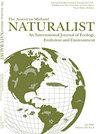印第安纳州中南部山猫恢复种群的生存和死亡来源
IF 0.6
4区 环境科学与生态学
Q4 Agricultural and Biological Sciences
引用次数: 2
摘要
摘要自20世纪80年代以来,美国中西部的山猫(Lynx rufus)数量一直在增加,直到20世纪中期,山猫数量大幅下降,并在当地灭绝。从1998年到2006年,我们在印第安纳州中南部的一个康复人群中监测了38只无线电项圈山猫(25只雄性,13只雌性),以调查生存和死亡原因。年生存率很高(Ŝ=0.80,95%CI=0.71–0.89),与其他对未开发种群山猫的研究结果相当,高于收获种群。在已知的17起死亡事件中,车辆碰撞是最大的死亡来源(n=9;53%),其次是非法枪击事件(n=3;18%)。家庭范围内栖息地异质性值越高,死亡率越低。对恢复种群的生存和死亡率来源的估计为比较管理策略以改善山猫的保护提供了重要的背景。本文章由计算机程序翻译,如有差异,请以英文原文为准。
Survival and Mortality Sources in a Recovering Population of Bobcats (Lynx rufus) in South-central Indiana
Abstract. Bobcat (Lynx rufus) populations have increased in the midwestern U.S. since the 1980s after substantial declines and local extirpations into the mid-1900s. We monitored 38 radio-collared bobcats (25 males, 13 females) from 1998 to 2006 in a recovering population in south-central Indiana to investigate survival and mortality causes. Annual survival was high (Ŝ = 0.80, 95% CI = 0.71–0.89), comparable to results from other studies of bobcats in unexploited populations and higher than in harvested populations. Of 17 known deaths, vehicle collisions were the largest source of mortality (n = 9; 53%), followed by illegal shootings (n = 3; 18%). Higher values of habitat heterogeneity within home ranges were associated with lower risk of mortality. Estimates of survival and mortality sources in recovering populations provide an important context to compare management strategies to improve bobcat conservation.
求助全文
通过发布文献求助,成功后即可免费获取论文全文。
去求助
来源期刊

American Midland Naturalist
环境科学-生态学
CiteScore
1.20
自引率
0.00%
发文量
38
审稿时长
18-36 weeks
期刊介绍:
The American Midland Naturalist has been published for 90 years by the University of Notre Dame. The connotations of Midland and Naturalist have broadened and its geographic coverage now includes North America with occasional articles from other continents. The old image of naturalist has changed and the journal publishes what Charles Elton aptly termed "scientific natural history" including field and experimental biology. Its significance and breadth of coverage are evident in that the American Midland Naturalist is among the most frequently cited journals in publications on ecology, mammalogy, herpetology, ornithology, ichthyology, parasitology, aquatic and invertebrate biology and other biological disciplines.
 求助内容:
求助内容: 应助结果提醒方式:
应助结果提醒方式:


